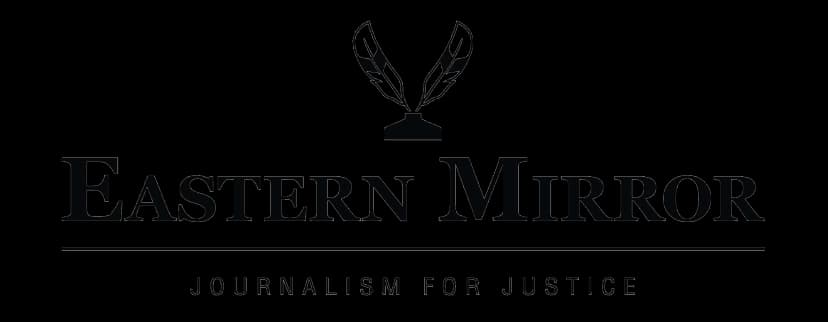WEDNESDAY, MAY 21, 2025
- Home
- NSCN (IM) unruffled by Ikato Swu’s exit — VS Atem
NSCN (IM) unruffled by Ikato Swu’s exit — VS Atem
Published on Apr 21, 2025
By Veroli Zhimo
Share
-1745251638927.png)
VS Atem
- DIMAPUR — The NSCN (IM) has dismissed concerns over the recent departure of Ikato Chishi Swu, son of its founding leader Isak Chishi Swu, saying it would not impact the organisation’s leadership or direction.
- “There is no collusion at all; there is no conspiracy,” said senior NSCN (IM) leader VS Atem, speaking to journalists on the sidelines of a consultative meeting with village authorities, civil society groups and community leaders from the Aghunaqa area, near the Assam-Nagaland border, in Niuland district.
- Swu had earlier announced his decision to join the NSCN’s eastern flank, headquartered in Myanmar, alleging that the current leadership of the NSCN (IM) had compromised with Indian authorities and strayed from the original Naga cause. In a statement issued on April 18, he accused the group’s leadership of corruption, collusion with Indian intelligence agencies, and internal nepotism, claiming that key positions within the organisation were being bought and sold.
- Atem strongly rejected these claims, stating, “From top to bottom, the NSCN will fight to the finish until our rights are recognised and our stand accepted.”
Also view:
- According to him, the group’s outreach event in Aghunaqa was part of broader engagements with other Naga regions. He went on to say that “justice must be restored to the Nagas”, whose land was divided and subdivided by the British government to serve their commercial and political interests.
- Earlier at the gathering, Atem claimed that India was a colonial construct, saying the country “did not exist politically” before the arrival of the British East India Company.
Also read: After recoup, Kitovi rebrands Kehoyi designated camp
- He reiterated the NSCN (IM)’s foundational position that the Naga people are historically and culturally distinct from Indians. Nagas are “not after other people’s land”, but seeking justice and recognition of their historical and political rights, he said.
- These rights, Atem said, were recognised by the 2015 Framework Agreement signed with the government of India, which categorically mentions “shared sovereignty” between the two entities. Among others, he also said that the two nations agreed to take up defence and foreign affairs together, while the Nagas were given the option of drafting their own monetary laws.
- However, problems arose when the issue of a separate flag and constitution (yehzabo) came up, and the Indian side refused. “On one hand, they said sovereignty, but how can there be sovereignty without flag, without yehzabo?” he questioned, adding that a solution cannot come about unless the government of India changes its stance on this issue.
- Further, he said that the issue of integration is covered by the Framework Agreement, which clearly states “peaceful coexistence of the two entities.”
- ‘No rights without land’
- Speakers at the meeting repeatedly referred to the importance of land and Naga rights, with NSCN/GPRN vice president Tongmeth Wangnao asserting that the land inhabited by the Nagas was “God-given.”
- Leaders from the Aghunaqa area also highlighted the long-standing administrative vacuum and unresolved issues in the border region, with Kughato Awomi, president of the Aghunaqa Kukami Kuqhakulu, noting that there has been no presence of Nagaland Police in the Aghunaqa area since its establishment.
- Former Western Sumi Youth Front (WSYF) president Mughavi Awomi described the meeting as “historic”, noting it was the first time top Naga political group leaders had visited Aghunaqa headquarters.
- He recalled that after the Framework Agreement was signed, the KAK Union—comprising Kuhuboto, Aghunaqa and Khaghaboto areas— as well as Niuland and Ato area leaders, initially adopted a neutral position. “Later, we were the first to publicly support the FA,” he said, calling for inclusion of borderland Nagas in any final political settlement.
- Asserting that “there can be no rights without land,” Awomi said that Nagas in the disputed area belt (DAB) of Niuland, Wokha and Mokokchung districts should not be left out. “Even if integration is not possible for interior Naga regions in other states, those of us living in the border belt must be included by any means,” he asserted.
- Highlighting the lack of clarity surrounding both the Framework Agreement and the Agreed Position signed by the Working Committee, Naga National Political Groups (NNPGs), Kughalu Aye, president of the Assam-Nagaland Border Peace Committee, said grassroots communities remained confused about the content and implications of both documents.
- “Is the government of India going to give one solution or two?” he asked, referring to the parallel peace tracks.
- Meanwhile, Vikiye Awomi, member of the NSCN (IM)’s Collective Leadership, stressed that the border dispute between Assam and Nagaland cannot be resolved through the Indian legal system alone. “It must be resolved politically, and this is included in the competencies of the Framework Agreement,” he said.

